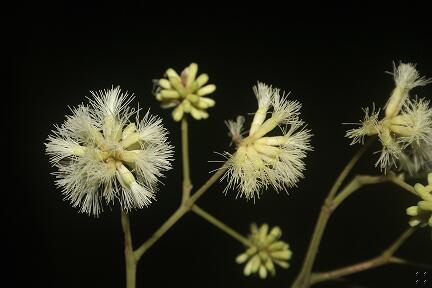Family: Fabaceae

Kingdom: Plantae Rank: Family Parent: Fabales Status: Valid
Common Names:
- Fabaceae - English, United States of America
Vegetative Morphology
Habit: Herbs, vines, lianas, shrubs, or trees.
Leaves: Leaves pari-, impari-, or bipinnately compound or sometimes 3-, 2-, or 1-foliate, alternate, rarely opposite; petiole and petiolules conspicuously cylindrical, swollen in the form of a pulvinus or pulvinulus.
Reproductive Morphology
Inflorescence: Inflorescence axillary, ramiflorous, cauliflorous, or terminal, a raceme, spike, or panicle, the pedicels often with bracteoles.
Flowers: Flowers usually bisexual, actinomorphic or zygomorphic; sepals usually 5, sometimes 3-6, free or fused into a tube, valvate or imbricate; petals usually 4-5, sometimes 0 or 1-6, free or fused; stamens 10-numerous, sometimes one, the filaments free, fused, or diadelphous; ovary superior, 1-locular, the style 1, the placentation marginal or subapical.
Fruit: Fruit a legume, drupe, samara, or loment.
Seeds: Seeds one to numerous per fruit, sometimes arillate, endosperm usually plentiful.
Other
Notes: Family very diverse, abundant, widespread, and highly variable morphologically. Sometimes divided into three separate subfamilies (Caesalpinioideae, Faboideae, and Mimisoideae) or treated as three distinct families (Caesalpiniaceae, Fabaceae, and Mimosaceae) based on differences in flower morphology. Flowers of subfamily Faboideae with petals modified into a keel, wing, and upper banner. Flowers of Caesalpinioideae with five petals and often with several sterile stamens. Flowers of Mimosoideae with petals fused into a elongate tube and numerous exerted stamens.